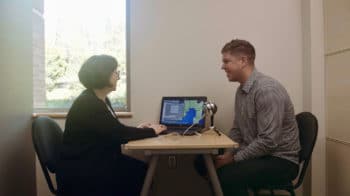
Purpose: To evaluate the effects of aural rehabilitation on quality of life in an older adult population presenting with hearing loss.Įligibility Criteria: Studies with adults presenting with hearing loss, ≥50 yr of age, with or without hearing aids, receiving interventions such as auditory training, speech-reading, communication strategies training, speech tracking, counseling, or a combination of approaches, and measuring outcomes related to quality of life, in an individual or group format, with or without significant others and with no limitations as to year of publication. With prevalence rates of hearing loss being highest in older adults, examining the effects of aural rehabilitation on this population is warranted. 2008 134:873–7.Background: Few systematic reviews have been conducted regarding aural rehabilitation for adults with hearing loss, with none specifically targeting the older adult population. The Jahrsdoerfer grading scale in surgery to repair congenital aural atresia. Shonka DC Jr, Livingston WJ III, Kesser BW. Bone-anchored hearing aid (Baha) in patients with Treacher Collins syndrome: tips and pitfalls. Marsella P, Scorpecci A, Pacifico C, Tieri L. International consensus recommendations on microtia, aural atresia and functional ear reconstruction. Zhang T, Bulstrode N, Chang KW, Cho Y-S, Frenzel H, Jiang D, et al. Current considerations in pediatric speech audiometry. Behavioral assessment of hearing in 2 to 4 year-old children: a two-interval, observer-based procedure using conditioned play-based responses. Visual reinforcement of head-turn responses in infants under 12 months of age. Auditory localization of infants as a function of reinforcement conditions. Using visual reinforcement audiometry in the assessment of hearing in infants. The audiologic assessment of the young pediatric patient: the clinic. Highlights in 2019 pediatric audiology literature. Evaluating the utility of non-echo-planar diffusion-weighted imaging in the preoperative evaluation of cholesteatoma: a meta-analysis. Li PM, Linos E, Gurgel RK, Fischbein NJ, Blevins NH. Cholesteatoma of the hypotympanum in a patient with Treacher Collins syndrome.

Mann W, Al-Nawas B, Wriedt S, Mann S, Koutsimpelas D. Acquired ear canal cholesteatoma in congenital aural atresia/stenosis. Middle ear dimensions in congenital aural atresia and hearing outcomes after atresiaplasty. Oliver ER, Lambert PR, Rumboldt Z, Lee F-S, Agarwal A. Grading system for the selection of patients with congenital aural atresia. Jahrsdoerfer RA, Yeakley JW, Aguilar EA, Cole RR, Gray LC. Atresiaplasty in congenital aural atresia: what the facial plastic surgeon needs to know. Year 2000 position statement: principles and guidelines for early hearing detection and intervention programs. Facial canal anatomy in patients with microtia: evaluation of the temporal bones with thin-section CT. Plomp RG, van Lieshout MJS, Joosten KFM, Wolvius EB, van der Schroeff MP, Versnel SL, et al.


Treacher Collins syndrome: otologic and auditory management. Ear malformations, hearing loss and hearing rehabilitation in children with Treacher Collins syndrome. Rosa F, Coutinho MB, Ferreira JP, Sousa CA. Language of early- and later-identified children with hearing loss. Yoshinaga-Itano C, Sedey AL, Coulter DK, Mehl AL. The surgical management of Treacher Collins syndrome. KeywordsĬobb ARM, Green B, Gill D, Ayliffe P, Lloyd TW, Bulstrode N, et al. Care is best coordinated by a multidisciplinary team experienced in the otologic manifestations of TCS, with contributions from a pediatric audiologist, otologist, speech therapist, and possibly a reconstructive surgeon. Surgical intervention via bone-anchored hearing implants or atresiaplasty typically occurs later in childhood (if at all) and should not delay the initiation of aural rehabilitation. Radiographic imaging, typically computed tomography, is necessary to assess the temporal bone anatomy and predict candidacy and outcomes following surgical interventions. Because of their ability to bypass the outer and middle ear, bone-anchored hearing aids are the most common type of amplification used in patients with TCS. Therefore, prompt referral for comprehensive audiologic evaluation should be prioritized. Early access to sound is critical for speech and language development. Diagnosis of the type and degree of hearing loss should occur as early as possible to facilitate aural rehabilitation with hearing aids, ideally prior to 3 months of age.

These include abnormalities of the auricle, outer ear, and middle ear, all of which typically result in conductive hearing loss. Treacher Collins syndrome (TCS) has many otologic manifestations.


 0 kommentar(er)
0 kommentar(er)
